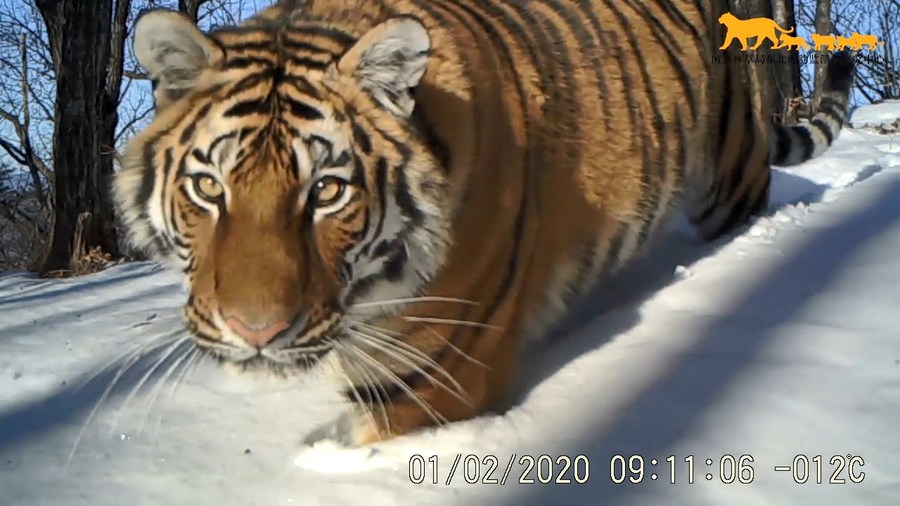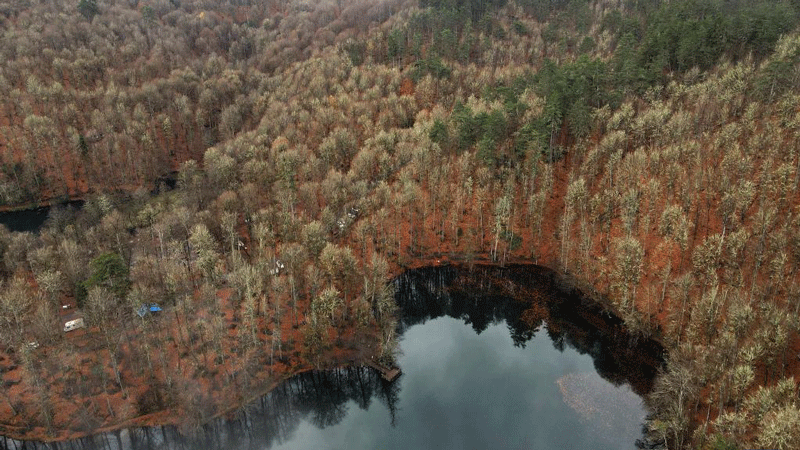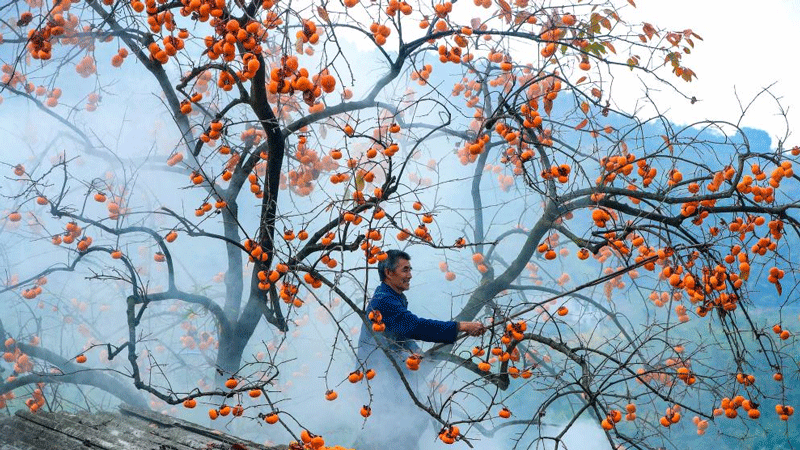"ID officer" of Siberian tigers witnesses the return of "King of Forest"

Photo taken with a monitoring camera shows a wild Siberian tiger in the Northeast China Tiger and Leopard National Park in northeast China, Jan. 2, 2020. (Xinhua)
CHANGCHUN, Nov. 28 (Xinhua) -- Duan Lianru cannot remember how many times she has met the "Miss Photogenic." Duan said that the gorgeous one seems to have put on a little weight recently and looks good.
The "Most Photogenic" Duan refers to is a 3-year-old wild female Siberian tiger with no pattern on the left front paw but three round patterns on the abdomen. Duan could always recognize her at a glance.
Duan, 36, works at the scientific research and monitoring center of the Hunchun bureau branch of the Northeast China Tiger and Leopard National Park administration. She has a very special job -- issuing "ID cards" for Siberian tigers.
"Patterns on a tiger are as unique as our fingerprints and they would never change," Duan said, pointing to the computerized footage of a Siberian tiger. "Different tigers can be distinguished based on the location, length, width, color, and shape of their patterns."
Siberian tigers, also known as Amur tigers, mainly live in Russia's Far East and northeast China. As one of the world's most endangered species, about 500 Siberian tigers are believed to be living in the wild.
To protect the big cats and restore the ecosystem, China has established the Northeast China Tiger and Leopard National Park with an area of over 14,000 square km and spanning Jilin and Heilongjiang provinces.
The latest data shows that the number of wild Siberian tigers in the park has exceeded 50. "Population of the mammal continues to grow and expand. In Hunchun City, Jilin Province, which is located in the core area of the park, tigers can now be spotted in all the mountains," said Feng Limin, deputy director of the monitoring and research center of Siberian tigers and Amur leopards under the National Forestry and Grassland Administration.
Although the monitoring of Siberian tigers has been greatly facilitated by technological means, a lot of work still needs manual refinement. "Tigers do not always travel along the route of infrared cameras we set. However, only when we get the patterns on both the left and right sides of the tiger could we determine whether they belong to the same animal," Duan said.
"Sometimes we can identify a tiger in one day, other times in six months or a year," she said.
According to Duan, the "ID cards" of the big cats contains a lot of information, including their patterns, areas of frequent activities, food chains, and mating behaviors, providing basic data for scientific research and protection work.
There are more than 5,000 intelligent infrared cameras distributed in the jurisdiction where Duan works. She needs to watch hundreds of monitoring pictures of Siberian tigers every day, observing them frame by frame before recording and comparing the images patiently. Now, experienced Duan knows the patterns of dozens of Siberian tigers like the palm of her hands.
Although Duan does not need to go up the mountain for her work, she knows every nook and cranny of life in the mountains. "A Siberian tiger was injured in a fight and became 'one-eyed,' but it still patrolled the mountains and hunted majestically. We admire it a lot," Duan said.
"The Miss Photogenic is the most frequently photographed tiger. I watched almost every stage of its life -- from when it was still the cub to the time it became old enough to leave her mother. Now, it has grown into a 'big girl,' ready to mate this year," she said.
Besides making "ID cards," Duan has also been "drawing genealogy" for Siberian tiger families. With the increasing number of big cats' families settling in the park, genealogy has more scientific significance.
Before the establishment of the park, 33 percent of Siberian tiger cubs survived to adulthood, but now the figure has climbed to more than 50 percent, said the park administration.
In the park, there are many scientific workers and thousands of rangers rooted in the mountains, working together to rebuild homes for the "King of the Forest."
"What I am doing is meaningful. I hope that people and wild animals can live in harmony and that nature will become more beautiful," Duan added.
Photos
Related Stories
Copyright © 2022 People's Daily Online. All Rights Reserved.









